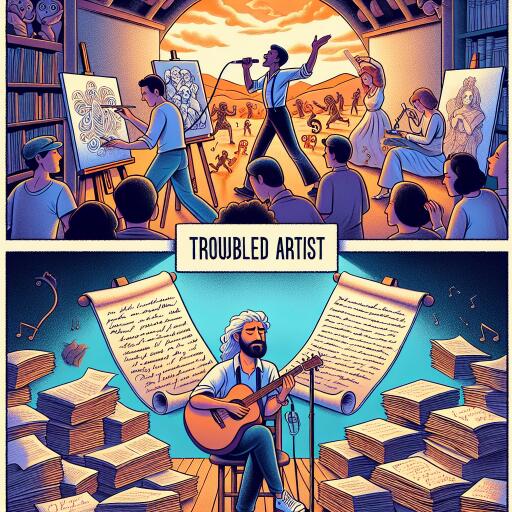3 Compelling Reasons To Rethink The ‘Troubled Artist’ Trope
The idea of the “troubled artist” is a pervasive one, suggesting that creative individuals must endure solitude and emotional turmoil to produce their best work. However, a shift in understanding is underway, backed by psychological research, which proposes that creativity flourishes not in isolation, but through collaboration. Let’s explore three key reasons why the myth of the solitary artist is being challenged by the benefits of creative partnerships.
1. Broader Perspectives Enhance Creativity
When creatives collaborate, they pool together diverse perspectives, experiences, and skills, enriching the creative process. This synthesis of ideas can unveil unique and unexpected possibilities that may remain untapped in solitude. Studies, including those published in Procedia – Social and Behavioral Sciences, highlight how social interaction and collaboration can significantly amplify creativity. With tools like Magma, HelloPaint, BoardMix, and FlockMod enabling real-time, global collaboration, the barriers to unified creative exploration are dissolving, allowing for a seamless merger of artistic visions from around the world.
2. Collaboration Multiplies Productivity
The concept that “two heads are better than one” finds firm footing in the creative world. Research indicates that productivity sees a notable increase with the number of collaborators, contradicting the solitary artist narrative. Through shared efforts, creative teams can tackle projects more effectively, leveraging each member’s strengths to overcome common barriers such as creative blocks or technical challenges. This teamwork facilitates not only a smoother creative process but also ensures tasks are executed efficiently and innovatively, showcasing the power of collective effort over individual endeavor.
3. A Source of Inspiration and Motivation
Interaction and collaboration can act as powerful catalysts for creativity, motivation, and inspiration. Studies suggest that creativity is inherently social; knowing that others are contributing to a shared project can push creatives to higher levels of performance. Moreover, a collaborative environment that is psychologically safe encourages risk-taking and experimentation, crucial for groundbreaking artistic work. It’s in these spaces that creators feel supported to explore bold ideas and push the envelope, contributing to a richer, more diverse artistic landscape.
In conclusion, the image of the lonely, tormented artist as the wellspring of creativity is gradually fading, making way for a new paradigm where collaboration and partnership stand at the heart of creative achievements. Embracing interaction and collective effort does not only open new doors of opportunity but also ensures that creativity is sustained by a supportive, inclusive, and dynamic community. As we move forward, it’s clear that the future of art and innovation lies in collaboration, transforming the way we create and appreciate art in the digital age.










